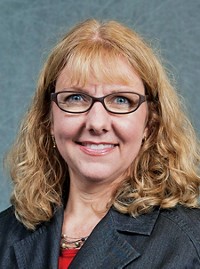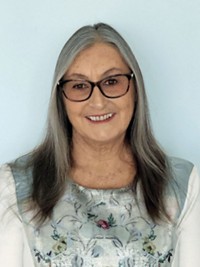Advertisement
Grab your lab coat. Let's get started
Welcome!
Welcome!
Create an account below to get 6 C&EN articles per month, receive newsletters and more - all free.
It seems this is your first time logging in online. Please enter the following information to continue.
As an ACS member you automatically get access to this site. All we need is few more details to create your reading experience.
Not you? Sign in with a different account.
Not you? Sign in with a different account.
ERROR 1
ERROR 1
ERROR 2
ERROR 2
ERROR 2
ERROR 2
ERROR 2
Password and Confirm password must match.
If you have an ACS member number, please enter it here so we can link this account to your membership. (optional)
ERROR 2
ACS values your privacy. By submitting your information, you are gaining access to C&EN and subscribing to our weekly newsletter. We use the information you provide to make your reading experience better, and we will never sell your data to third party members.
Comment
Comment: Initial results from the ACS membership transformation
by Laura Sremaniak, chair, ACS Committee on Membership Affairs
May 31, 2024
| A version of this story appeared in
Volume 102, Issue 17

The ACS Committee on Membership Affairs (MAC) has accomplished much this past year with the support of the American Chemical Society Council, and I am pleased to bring you this membership update.
In 2022, we launched our new membership model, so we have the first synopsis of year-end data to share. At the close of 2023, our membership data reveals positive stabilization with 100,060 members (27,000 new) and 3,336 society affiliates (533 new) and growth with 101,607 (12,000 new) community associates. Retention rates are improving, but member retention remains one of our biggest challenges—especially of individuals who have fewer years as members.
With the resounding support of the council last year, changes that went into effect this year include offering society affiliates access to the standard membership package, removing the age requirement for emeritus members, and improving access to the disability waiver for qualifying members.
World Bank membership classification discount
50%
Residing in upper-middle-income countries
66%
Residing in lower-middle-income countries
75%
Residing in low-income countries
In New Orleans, the council approved the proposed 2025 Schedule of Dues and Benefits (formerly known as the Schedule of Membership), which included transferring some language to the Standing Rules and keeping the pricing of each benefits package the same: $160 (premium) and $80 (standard), with a 5% discount for members who renew online. Dues categories and other discounts can be reviewed at www.acs.org/DD. Most significantly, we made the emerging economy dues discount permanent. This discount is based on the success of the World Bank discount market test.
The emerging economy membership dues discounts apply to individuals who live in countries that are classified by the World Bank according to their gross national income per capita. ACS automatically applies a discount to national membership dues at checkout based on this classification.
As a market test, this discount was available to only 27 countries that, in addition to meeting the World Bank criteria, met the ACS requirement of having an international chemical sciences chapter (ICSC). With full support from our colleagues on the International Affairs Committee (IAC), we will remove the ICSC requirement, making an additional 39 countries eligible for dues discounts starting next year.
On behalf of MAC, I want to extend our appreciation to all council members for their strong affirmation of this change. We hope you are as excited as we are about the opportunity this new discount will bring to so many current and future members around the world.
Our membership survey and additional third-party research reveal that awareness of existing ACS benefits and support is always the biggest hurdle in connecting individuals to all that is available to them through membership. Knowledge of these benefits affects the value they find in being an ACS member. We also know the impact that each existing member has on recruiting additional members. We have received many requests for more recruitment help, whether on behalf of ACS or for sections, chapters, divisions, and committees. For that reason, we have developed a new Engagement and Recruitment Toolkit, which can be found at www.acs.org/Toolkit. This new resource includes a variety of copy-and-paste templates for emails or letters that you can use to address past, existing, or potential members. MAC hopes this toolkit makes your individual communication efforts easier, and we will continue to develop its usefulness and robustness. Please share any additional ideas for templates or resources with us at mac@acs.org.
I would also like to bring your attention to the newly launched ACS Proactive Membership Assistance Program (PMAP). Found at www.acs.org/PMAP, PMAP is a consolidation of all the services, dues, and discounts available to ACS members who may be facing significant life challenges. The hope is that this resource makes supplemental relief easy to find and more accessible. We encourage all our members to help build awareness of the many ways ACS supports our growing and diverse community around the world.
While MAC has certainly been hard at work these past few years launching the new model and improving the flexibility of membership to be more inclusive, we are also looking to the future. We have a newly developed 5-year strategic plan with a new mission: “growing and engaging ACS membership by advancing innovative offerings and opportunities to meet the evolving needs of the diverse global chemistry community.”
MAC has outlined three strategic goals that will help us continue to grow as a society, a committee, and true collaborators across the council: 1) advocate for growth of a diverse and global membership, 2) champion increasing retention of ACS members and society affiliates, and 3) promote communication and partnerships to enhance member experience and engagement.
Membership has a bright future in ACS, and MAC looks forward to working with all of you to achieve these goals.
Views expressed are those of the author and not necessarily those of C&EN or ACS.





Join the conversation
Contact the reporter
Submit a Letter to the Editor for publication
Engage with us on Twitter